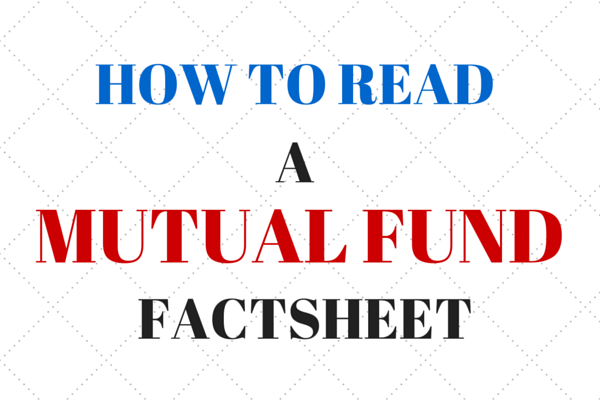If you have ever read or heard a mutual fund advertisement in print or radio or TV, the final cautionary words are – “Please read the scheme information document carefully before investing.”
In reality, very few investors actually do it. That does not take away the fact that the best way to understand a fund is to read various documents associated with it.
Unfortunately, the fund industry has done its best to confuse the investor in every way possible. The information is strewn across so many documents including a Scheme Information Document (SID), a Key Information Memorandum (KIM) and a Factsheet.
And worse, there is no standard format for them. So, if you take scheme documents of two funds, you would feel that they have come from two different planets.
Just search documents for any two funds on the Internet and you will know what I mean.
As an investor, the most important information that you should be looking for is available in the fund factsheet.
Welcome – Mutual Fund Factsheet
What does the fund factsheet tell you? There are over 15 facts about a fund that a factsheet can bring to your notice. But how do you make sense of it all.
Let’s take this up with an example.
We will consider an actively managed equity mutual fund (that is not an index fund). The Franklin India Bluechip Fund (FIBF) should be a good one.
For your reference, click here to download the factsheet of Franklin India Bluechip fund.
OR
Click here to read the Fund CV online on Unovest
The key parts of a mutual fund factsheet are:
- Basic Information
- Portfolio Strategy
- Volatility Measures
- Charges
The Basic Information covers areas like Scheme Name, Objective, Benchmark, Risk profile, Scheme Suitability and Fund Manager(s).
The Portfolio Strategy would have information on the Investment Style, Top Holdings (sectors, stocks) and Turnover Ratio.
Volatility measures would be represented by Standard Deviation and Sharpe Ratio.
Finally, Charges pertain to the Total Expense Ratio of the fund along with exit loads, if applicable.
As an investor, it is highly likely that you might feel overwhelmed with the information. The recommendation is not to avoid the process. Start with the fund factsheet and then you can go deeper with the Scheme Information Document. Use it to ask more questions of a fund.
Click here to read the full article on the Unovest Blog.
Between you and me: When was the last time you read the fund factsheet of your mutual fund investment? What other information do you think is important and is available in the factsheet.

Factsheets while giving out mandatory information, also try to hide uncomfortable facts. If it werent so unethical, it would actually be funny. E
Oops, that got posted inadvertently. Anyway try reading the expense ratio of direct funds in ICICI or SBI fund factsheets. Hilarious.
Ah! I saw. SBI Fund factsheet doesn’t list the expense ratio at all. And ICICI one says go to page 125 to see the expense ratio. Wow!
Thanks for sharing valuable information, indeed analysis.
Regards,
http://www.expertmile.com
Thanks Nikesh. Keep learning.